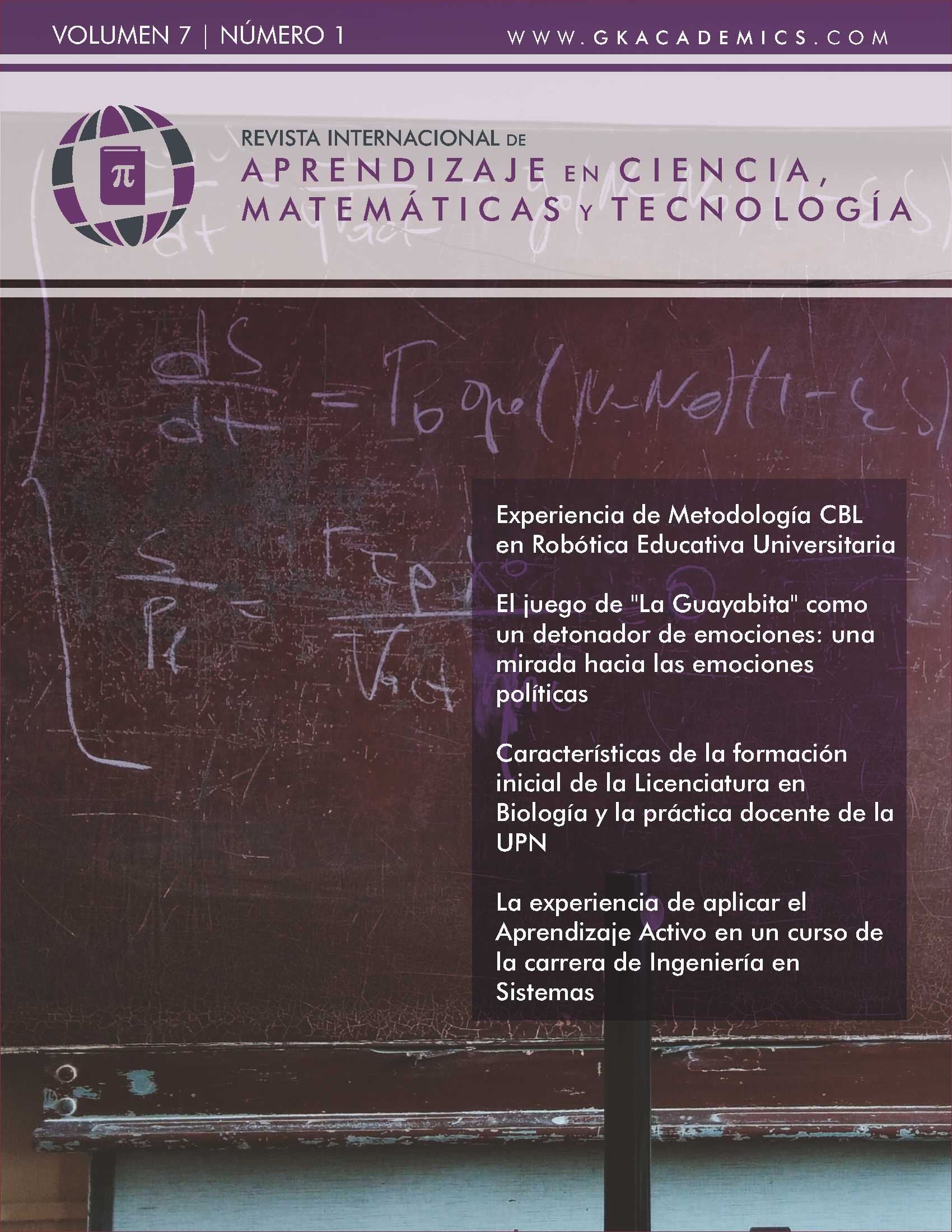Experience of CBL Methodology in University Educational Robotics
DOI:
https://doi.org/10.37467/gka-revedumat.v7.2212Keywords:
STEM, CBL, Educational robotics, Challenges, MultidisciplinarityAbstract
Given the diversity of scientific disciplines that encompasses robotics of university degree, its teaching entails a particular effort for teachers and students. This can cause deficiencies in the acquisition of the fundamentals that can lead to a disassociation between theory and practice. The involvement of the student in the development of a practical application where the fundamentals are a necessary tool allows being a motivating instrument. For this purpose, in this paper is introduced the methodology based on challenges, analysing the impact on the results as well as the acceptance and perception received by the students. The results of the study show an improvement in the deep involvement of students, both in theoretical concepts, as in their practical application, as well as greater motivation to focus the subject and keep attendance until the end.
References
Apple, (2011). Challenge based learning: A classroom guide.
EduTrends, (2015). Aprendizaje basado en Retos.
Johnson, Laurence F.; Smith, Rachel S.; Smythe, J. Troy; Varon, Rachel K. (2009). Challenge-Based Learning: An Approach for Our Time. Austin, TX: The New Media Consortium.
Arthur W. Chickering, Zelda F. Gamson. (1987). Seven principles for good practice in undergraduate ducation. American Association of Higher Education Bulletin no 7 pp. 3-7.
N.S. Chapman. (1996). The Rough Guide to Problem–Based Learning in Engineering. Oxford Brookes University.
A. Rugarcia, R.M. Felder, D.R. Woods, and J.E. Stice. (2000). “The Future of Engineering Education. I. A Vision for a New Century.” Chem. Engr. Education, in press.
Allen Klinger, Cynthia, J. Finelli, and Dan D. Budny. (2000). Improving the Classroom Environment. Proceedings of the 30th Annual IEEE/ASEE Frontiers in Education Conference, Kansas City, MO, October 18–21.
Bravo-Sánchez F, Forero-Guzmán A. (2012). La robótica como un recurso para facilitar el aprendizaje y desarrollo de competencias generales. Education in the Knowledge Society (EKS).
Downloads
Published
How to Cite
Issue
Section
License
Aquellos autores/as que publiquen con esta revista, aceptan los términos siguientes:
- Los autores/as conservarán los derechos morales sobre la obra y cederán a la revista los derechos comerciales.
- Transcurridos 2 años desde su publicación, la versión del editor pasará a estar en acceso abierto en la web de la editorial, pero la revista mantendrá el copyright de la obra.
- En el caso de que los autores deseen asignar una licencia abierta Creative Commons (CC), podrán solicitarla escribiendo a publicaciones@gkacademics.com.


